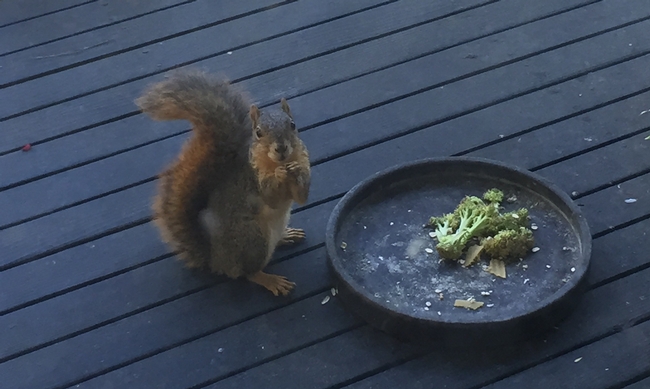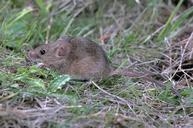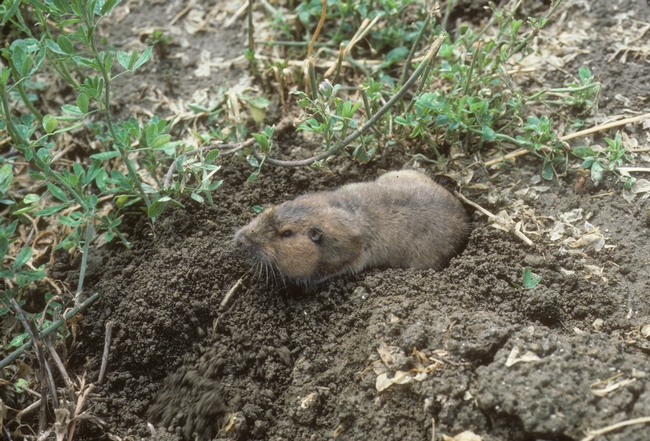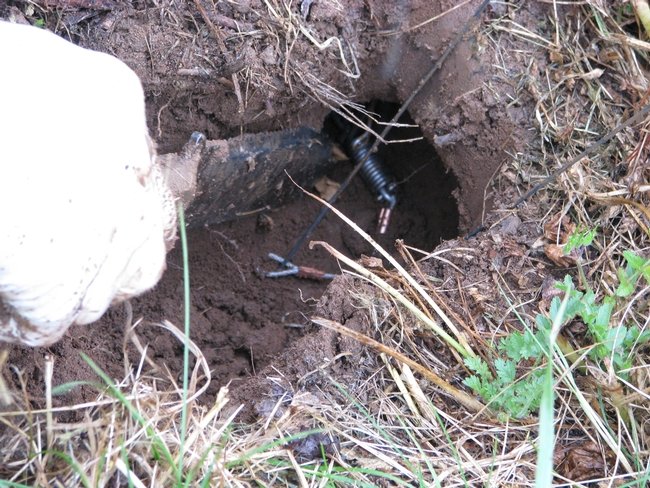
Posts Tagged: squirrels
New guide helps organic growers manage burrowing rodents
Burrowing rodents can cause extensive and expensive damage to orchards and crop fields. To manage the pests without chemicals used on conventional farms, organic growers can consult a new publication from UC Agriculture and Natural Resources scientists.
“Burrowing Rodents: Developing a Management Plan for Organic Agriculture in California” outlines management within organically acceptable methods using an integrated pest management approach.
California ground squirrels, pocket gophers and meadow voles are the three most common species that cause damage. Squirrels chew on seedlings, fruit and nuts, killing young trees and reducing crop yields. In addition to plants, ground squirrels, pocket gophers and voles can chew on irrigation lines, and their burrow systems can channel water away from plants and erode the soil. The holes and mounds created by burrowing rodents pose hazards to farmworkers and farm machinery.
This publication helps growers identify the rodent species on their properties, their life cycles and tools available to control them.
“Growers can read about how to effectively select and set a range of traps for burrowing rodents,” said co-author Margaret Lloyd, UC Cooperative Extension small farms advisor for the Capitol Corridor. “Traps are an important tool for organic management, but maximizing control comes from integrating knowledge. Here we present information about rodent biology, trap efficacy, biocontrol, habitat management, plant protection and other approaches to collectively manage the pest problem.”
In the publication, Lloyd and Roger Baldwin, UC Cooperative Extension wildlife specialist in the UC Davis Department of Wildlife, Fish and Conservation Biology, review the effectiveness of commercially available traps – where to place the traps, whether to use attractants, and methods of euthanizing the animals.
They also offer cultural techniques for deterring rodents such as flooding fields and deep ripping soil to destroy burrow systems. Crops for orchard floors or cover cropping can be selected and managed to minimize habitat that protects and encourages gophers and voles.
For biological control, they suggest barn owls, raptors and snakes might be able to assist, but warn growers that predators alone will not be able to eat enough of the rodents to reduce the high populations to tolerable levels for many growers.
“Effective management will rely on a suite of tools,” said Baldwin.
The 15-page publication is available for free download at https://anrcatalog.ucanr.edu/Details.aspx?itemNo=8688.
Top Ten Pest Notes of 2019
At some point, all of us encounter a pest in our home, garden, or landscape. But you're not alone!...
Top 20 Pest Notes of 2017
Pests have popularity contests too. We recently looked at how many visits our popular Pest Notes...
Don’t feed wild animals, says UC ANR pest expert

California law states: “Except as otherwise authorized in these regulations or in the Fish and Game Code, no person shall harass, herd or drive any game or nongame bird or mammal or fur-bearing mammal. For the purposes of this section, harass is defined as an intentional act that disrupts an animal's normal behavior patterns, which includes but is not limited to, breeding, feeding or sheltering. This section does not apply to a landowner or tenant who drives or herds birds or mammals for the purpose of preventing damage to private or public property, including aquaculture and agriculture crops.”
Feeding wild animals may help non-native, invasive, nuisance and feral animals survive, says Niamh Quinn, UC ANR Cooperative Extension advisor in San Diego and Los Angeles counties.
“Many of these species have public health risks associated with them, which can cause serious illness in humans,” Quinn said. “Rats and squirrels carry fleas that transmit plague and feral cats also carry fleas that carry typhus. Both of these diseases can be transmitted to people and cause serious illness, or even death.”
During the summer of 2015, two tourists at Yosemite National Park contracted plague, but humans are not the only ones at risk from disease. Wildlife can also become more exposed to disease as a result of people feeding them.
The Pacific Flyway is a major north-south flyway for migratory birds in America, extending from Alaska to Patagonia. As part of the Pacific Flyway, California is a temporary home for many species of birds. Due to people feeding them, some of these birds no longer naturally migrate.

Sustaining nonnative and feral animals can also have negative impacts on native wildlife, she said.
“For example, the eastern fox squirrel, which has now been released in many cities in the state, is competing with the native western gray squirrel,” said Quinn. “Sustaining the nonnative and invasive eastern fox squirrel could further aid in its distribution in the state, which would spell disaster for the native gray squirrel.”

“Not only do these species have public health issues associated with them, they also compete with native wildlife,” Quinn said. “They prey on bird eggs and can compete with native rodents for food resources.”
Indirect feeding of wildlife can also lead to serious conflicts between people and wildlife, Quinn warned.
“Bears that become accustomed to human food often have to be trapped and re-released and some are even euthanized,” Quinn said. “Coyotes are now common-place in some of our cities in California. Relying on human food could cause habituation of these wild animals and cause conflicts to rise. It is important that we cover our trash cans and make sure that we keep wildlife out of them.”
The California Department of Fish and Wildlife has an initiative called “Keep Me Wild” with the slogan “Wild animals don't need your handouts. They need your respect.” Quinn urges people to consider the long-term welfare of wildlife the next time they are tempted to feed wild animals.
For more information about managing pests around homes, visit the UC ANR Statewide Integrated Pest Management Program website: http://www.ipm.ucanr.edu/PMG/menu.homegarden.html.



